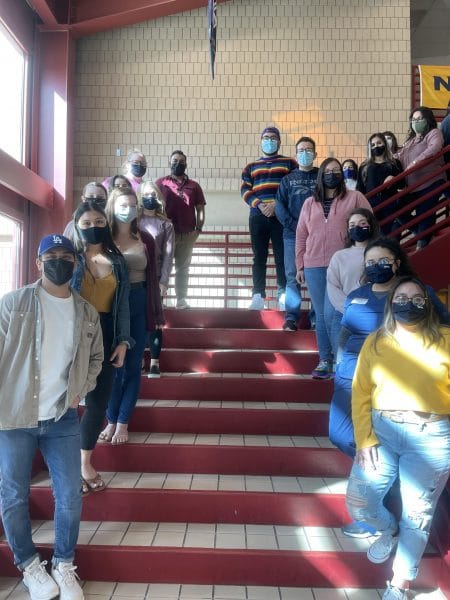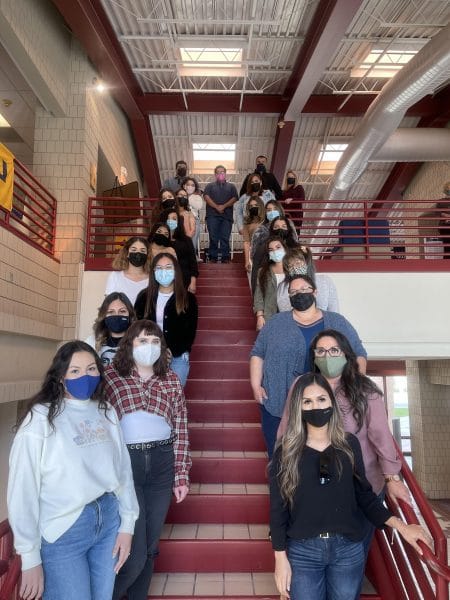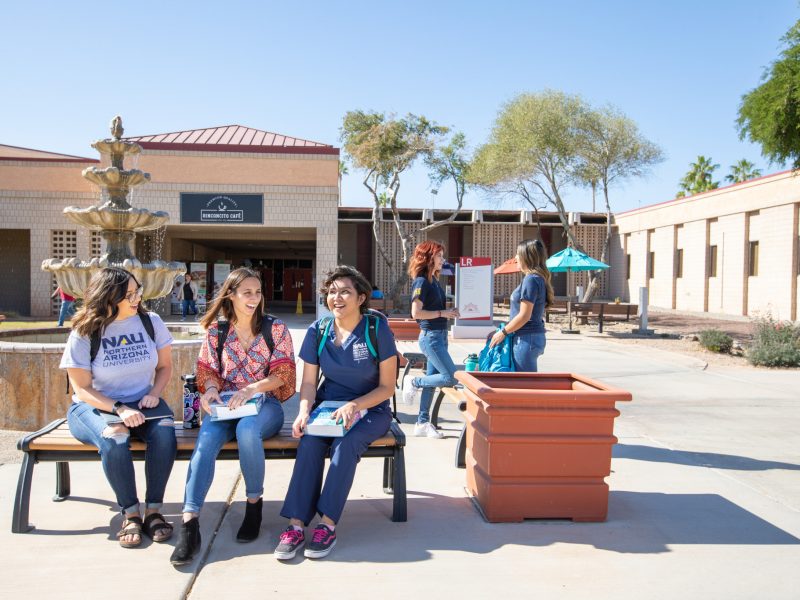Nursing and Social Work students work together for first ever Interprofessional Education session

Bachelor of Nursing (BSN) and Bachelor of Social Work (BSW) students recently converged at a first-ever Interprofessional Education (IPE) session at NAU-Yuma, an event that was planned twice but did not occur during the Spring and Fall 2020 semesters due to the pandemic. “The first session was scheduled soon after Spring Break 2020, and we never returned to campus after Spring Break that semester, said Jason Bradley, event facilitator, assistant clinical professor and program coordinator of the School of Nursing at NAU-Yuma.
With determination and persistence, however, Bradley and his team made the IPE happen for students in the time of COVID.
The IPE took place on March 3, 2021 at the NAU-Yuma/AWC shared main campus. Attendees were comprised of about 35 students from a BSW research class and a Nursing palliative care and gerontology clinical course. The IPE session focused on the topic of Advance Care Planning, which applies to both disciplines, Bradley said.
The IPE revolved around student exploration of their own perspective and that of the other disciplines by engaging in resources from the Conversation Project, an initiative from the Institute for Healthcare Improvement which has grown tremendously since its inception 10 year ago, Bradley said.

Karla Daniel, a second semester Junior in the BSW program, enjoyed the IPE because it gave her the opportunity to meet members of her cohort as well as students from the nursing cohort. “The most helpful thing I learned at this event was the importance of having a health care plan,” she said. “The modules we were required to complete prior to the event were very informative and detailed the importance and benefits of working together with all agencies involved in a person’s health care plan. I completely agree with this; you know that saying ‘it takes a village to raise a child’? Well, I think it takes more than one person/agency to make sure the health and well-being of a patient/client is secured.”
Rudy Bernal attends the School of Nursing at NAU-Yuma, expects to graduate in the fall of 2021, and aspires to work in a critical care unit or palliative care setting, where he may likely use the tools provided during the IPE. “The most helpful thing about our event was how we learned the importance of having conversations with our family and our patients about serious illness, and what kind of care we would like to receive if we were to become seriously ill,” he said.
Students attending the IPE were provided with a Life Care Planning packet from the State of Arizona, so each could document their own preferences and learn about advance care planning. They also had opportunities to practice communication tools with inter-professional peers, and to reflect on applications to both disciplines. Activities and modules to prepare students for the IPE were planned and taught by event participants Kara Ahearn, assistant clinical professor at NAU-Yuma; and Heather Clark, associate clinical professor of Nursing at NAU-Yuma.

Clark said that the culminating IPE helped nursing students think about their own end-of-life preparation as well as how they can help their future patients prepare for those difficult conversations. “It allowed them to engage with social work students and appreciate their perspective,” she said. “In the future, these students will be professional nurses and social workers and they will work together to help patients and families understand this most important conversation and preparation, that of end of life wishes.”
To make the IPE event happen, organizers had to pare down original pre-pandemic plans to a single location, shorter duration, and smaller group size in the available space. “All mitigation measure were in place, and many of the participants were fully vaccinated at the time of the event,” Bradley said.
Ahearn said the successful event held a lot of value for the social work students. “The students provided a great deal of positive feedback and demonstrated a high level of interest and enthusiasm in regard to working with the nursing students.” The students also learned about the natural overlap between the social work and nursing professions and how much they complement each other in health care settings, she added.
